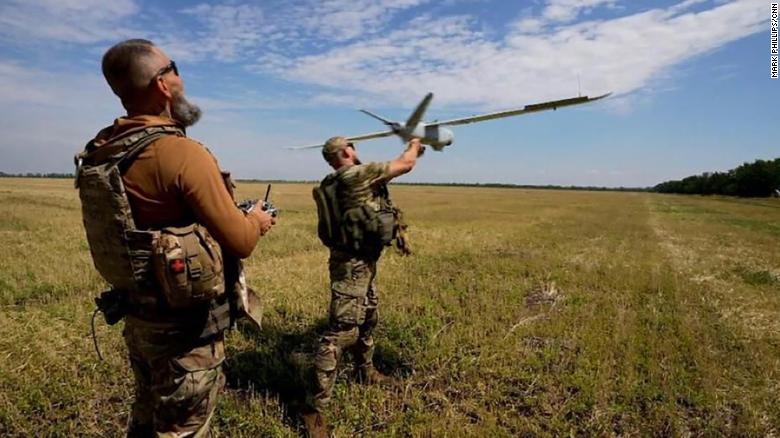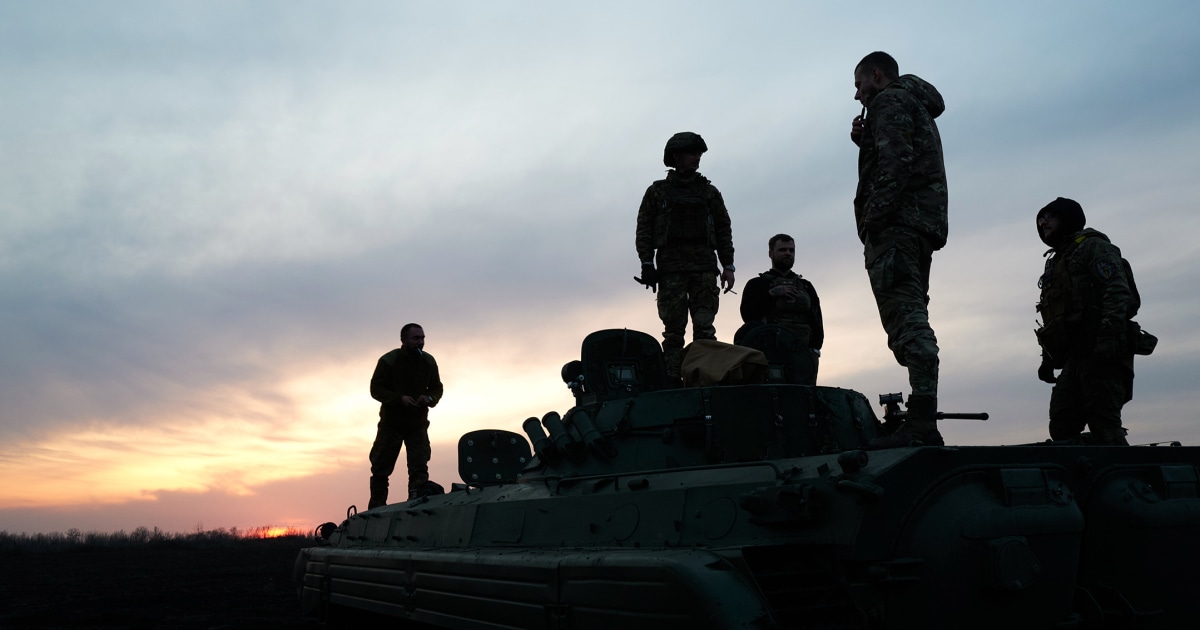Life here is as hard as this saw says Ukrainian 3:02
Kramatorsk, Ukraine (CNN) --
There are many observations to be made about Ukraine.
But on a recent road trip, one sticks out: how vast the country is.
Three weeks driving from south to east in this country through villages, towns, trenches and hedgerows that are the strategic equivalent of this high ground warfare is an education Russian President Vladimir Putin could use.
Nearly six months later, the disastrous war he launched is stalled.
Scenes reminiscent of World War I trench warfare and its associated incremental gains and death are taking hold.
The nearly 1,000-mile-long battlefront that Putin opened has hardened, but the country behind it is deep and, for the most part, unscathed.
30 miles from the front, the city's lawn is still being mowed, while many hundreds of miles away in the capital, Kyiv, elegant restaurants have reopened, where fine wines and chilled champagnes are available, and the fresh fish Mediterranean is on the menu.
ANALYSIS |
Putin is causing carnage in Ukraine and no one can stop him
This is a bountiful land, with fertile farms and proud crops rich in rain and sun.
If strategic depth is what lies behind the front lines, Ukraine has untapped wealth available.
advertising
Perhaps most surprising is the number of men of military age across the country who are not yet committed to fighting.
Ukraine is at war, but it seems not quite yet.
Only part of Ukraine's potential fighting force is in bunkers buried in tree lines overlooking the Russian forces.
Cobblers, authors, artists, teachers, businessmen, journalists, even a former CEO of a McDonalds franchise, check Putin's momentum, but when the government needs him, there are many more to call on.
The big takeaway is that this is not a war that will be over quickly, it's not even clear yet if the real defining fight has begun.
Bombed shops in Siversk, in eastern Ukraine.
The reality on the ground
No frontline position can truly be measured on a day-to-day basis, but after weeks of travel and many conversations, a reality emerges.
The war settles into a slower phase in which the outlines of what is in dispute become clear, but the details on any given day change.
The tree lines bordering the huge fields here are favored by both sides to remain hidden from drones and the attacks that follow once they are spotted, but the huge fields often dictate front lines a kilometer away.
The result, less probability of change of positions.
Troops on some fronts in the east told CNN they had seen as many as half of the Russian troops withdraw from the fighting, but only a few miles away amid a cacophony of artillery, graduated missiles, anti-aircraft fire, machine guns. heavy weapons and small arms, Russia seems on the bet.
And along the lines in the south, Ukrainian troops told us they had seen the Russians gain muscle, pushing more forces.
Ukrainian officials say they expect a Russian advance and have constructed a counter narrative that they will retake Kherson, one of the first cities to fall in early March, as Russia steps up attacks in Mykolaiv.
Logically, Kherson is the first obvious big take, most of the Russian forces are on the other side of the Dniper River, making it a vulnerable bridgehead valued by both sides.
Ukrainian soldiers launch a drone on the southern front.
However, the reality on the ground is that we did not see a build-up of Ukrainian forces.
In fact, just the opposite: huge tracts near the front were devoid of soldiers.
They weren't hiding in the trees either;
the roads appeared largely untouched by heavy tracked fighting vehicles or tanks, with no telltale mud on the road or any sign that troops were moving in large numbers.
Russia lied to get into this war, lied to the world that it would not invade, and lied to itself, hoping for an easy victory.
She now she too may be the victim of a carefully curated lie or information operation that sows false information about Ukraine's intentions.
The hype about the southern Ukraine offensive may be just that, a trick that sees Russia redeploy forces from the east to the south.
What hasn't changed, despite the influx of Western weapon systems like the US HIMARS and M777, the British MLRS and Poland's KRABS, Russia still outnumbers and outguns Ukraine five to one. .
ANALYSIS |
Russia shows its true face by attacking the port of Odesa, just a few hours after signing a grain agreement with Ukraine
Ukraine's President Volodomyr Zelensky says there will be no peace until Russia leaves all occupied territory, including Crimea, which it annexed in 2014. He will need an army to do it, but not the hodgepodge of regulars and volunteers he has at his disposal today. .
Today, cell phones often replace secure radios, flip flops for combat boots, friendships for formal command structures.
One volunteer drone commander said he calls his fellow gunner on an unencrypted mobile phone, not a secure radio or data channel, when he sees a good target.
In a more cohesive military structure, the artillery commander would see the live feed from the drone.
Ukraine's military will not give an inch without a fight, but while its volunteer army has impressed the world and shocked the invading forces with its determination and resilience, retaking lost territory would cost less blood with a more integrated and professional force.
A mural supporting Ukrainian soldiers is seen on a wall in the town of Pokrovske.
Time and time again, along the front line, troops told us that when they open fire on Russian forces, the enemy guns go silent.
Western aid buys a respite, but not a lasting respite from the threat.
The pale faces and distant gazes of the soldiers told us how much time they spend sheltering in damp, shoveled, claustrophobic holes, wondering if the next missile to arrive will be the last.
Unless you've experienced this barrage, it's easy to underestimate just how harrowing the constant danger is, for soldiers and civilians alike.
Devours sleep, stretches time, collapses concentration.
Senses shut down, many impervious to detonations, only diving for cover when an explosion is particularly close.
That is the life we find in many towns and villages in the wide swathes of disputed territory, the closer to the front, the greater the danger.
Like scenes from the First World War, citizens collect wood from the bombed-out rubble of neighbors' houses, cook outside because they have no gas, electricity or water.
Can you imagine a winter like this?
Soon, we won't have to, the cold months are approaching, the hardships and deprivations will multiply.
Siversk residents Valeria Mazina (L) and Svetlana (R) cook on the street.
Local hospitals clean rooms ready to treat more victims.
Russia is increasingly targeting civilians with illegal cluster bombs, significantly increasing the number of victims and spreading terror.
One victim told us that he was sitting outside his house with friends when a cluster bomb went off, injuring three of them and breaking his leg, damaging his arm and spattering his body with tiny metal fragments.
Putin's hell has many more horrible tomorrows to come, and while the tide of Putin's offensive has yet to conclusively turn for Ukraine, it is weakening in his favor.
Ukraine WarRussia invasion of UkraineVladimir Putin











